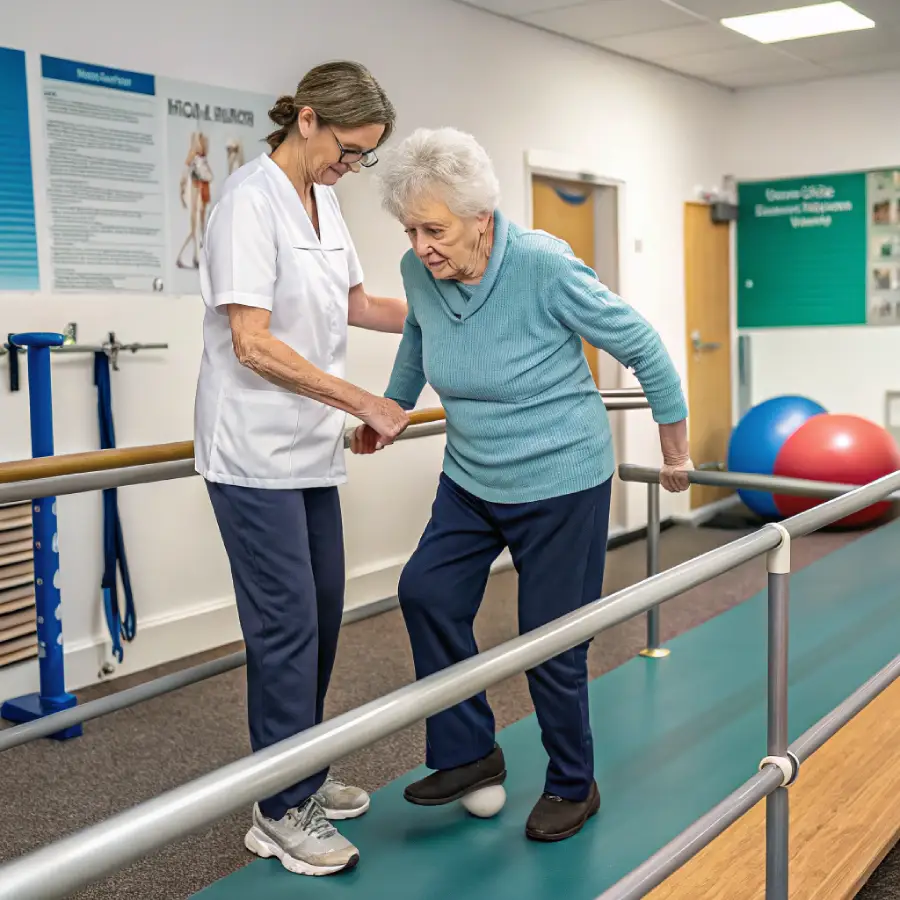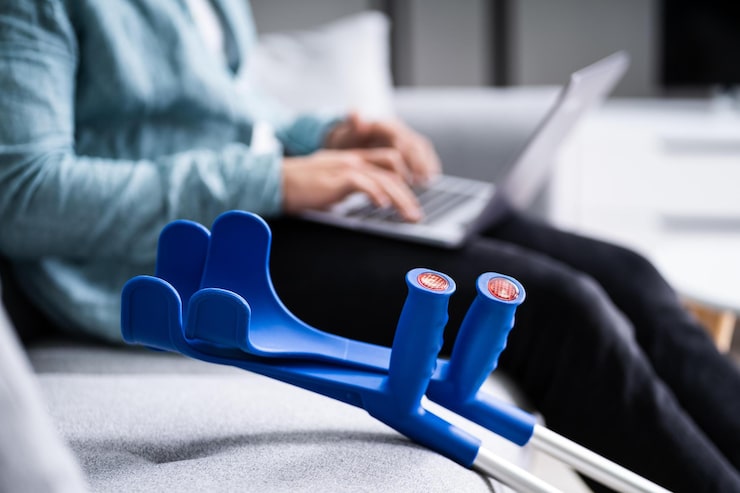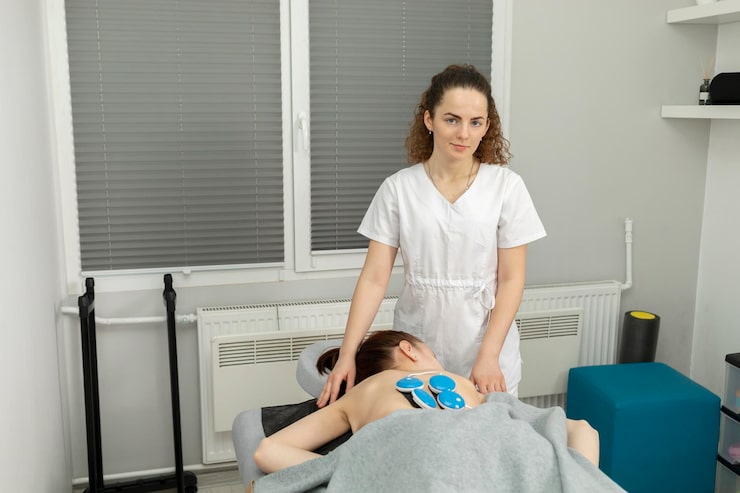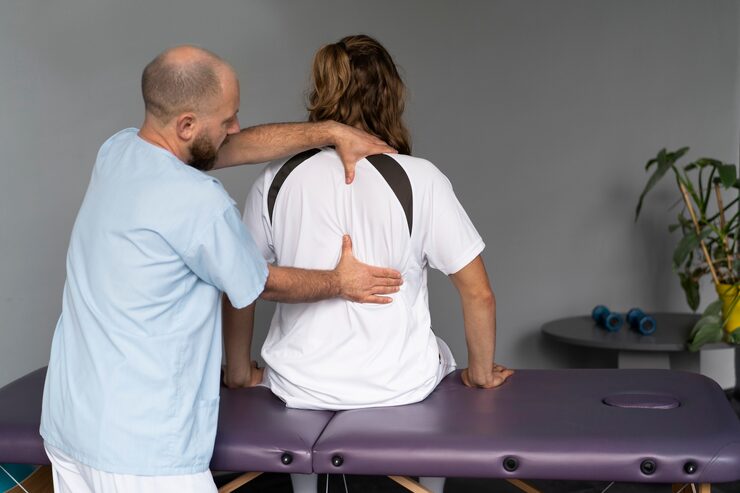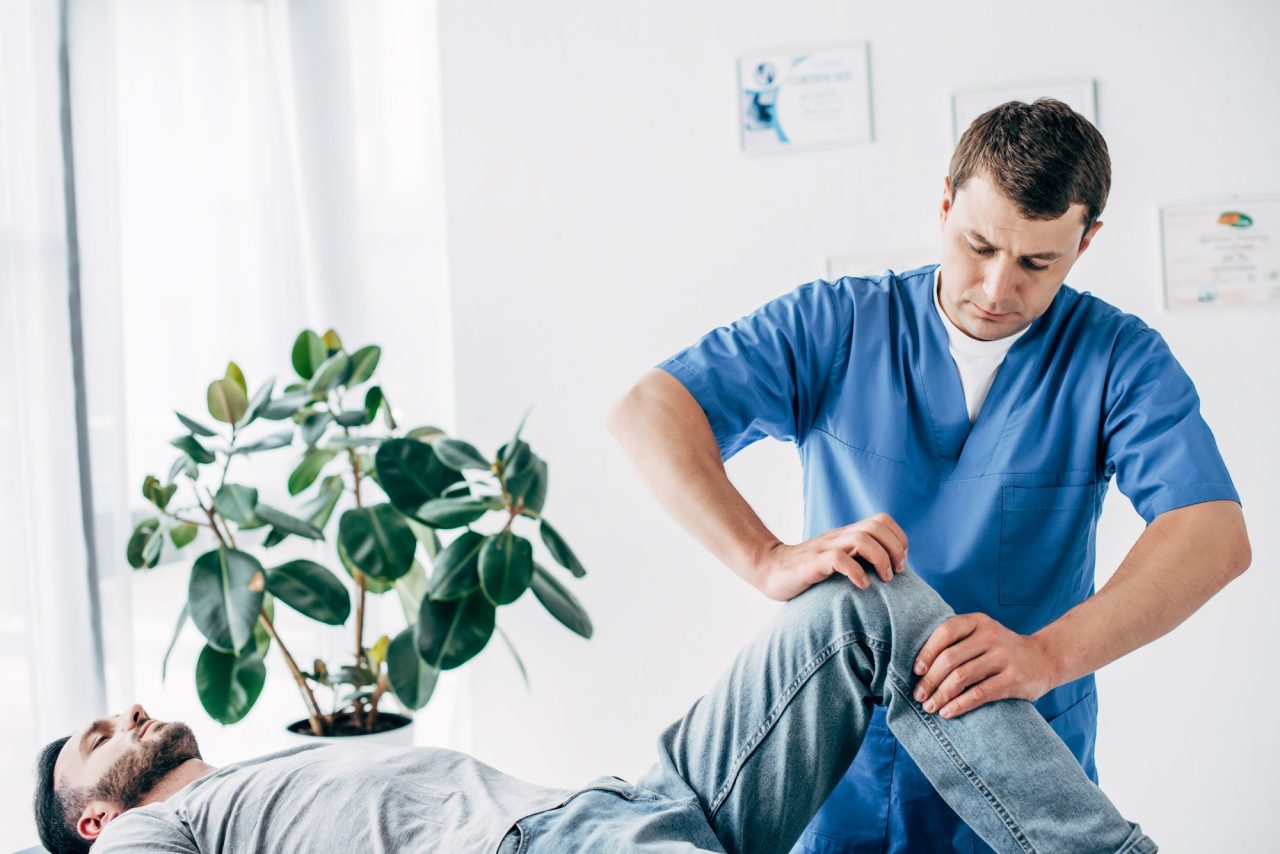Falls among older adults are an alarming and often overlooked health concern. Did you know that one in four adults aged 65 and older falls each year? Falls are not only a leading cause of injury, but they can also result in permanent disabilities and a significant decline in quality of life. As people age, the risk of falling becomes even greater due to a combination of physical, cognitive, and environmental factors.
However, falls are not inevitable. Research has shown that physiotherapy can significantly reduce the risk of falls in older adults. With a focus on strength, balance, flexibility, and mobility, physiotherapy empowers seniors to live more independently and confidently. But how exactly does physiotherapy help, and what role can it play in preventing falls?
In this blog post, we will dive deep into the role of physiotherapy in preventing falls in older adults, explore specific exercises designed to improve strength and balance, and highlight the key strategies physiotherapists use to reduce fall risk. Keep reading to learn how physiotherapy can make a significant difference in helping older adults stay active, independent, and safe.
Understanding the Fall Risk in Older Adults
Aging is often accompanied by a variety of physical changes that can make older adults more susceptible to falls. These changes can affect balance, mobility, strength, and coordination, increasing the likelihood of falling.
For expert physiotherapy services in Scarborough, get in touch with us today
Why Are Older Adults More Vulnerable to Falls?
There are several key reasons why older adults are at an increased risk of falling:
- Muscle Weakness: As people age, muscle mass and strength naturally decrease. Weak muscles, particularly in the legs and core, can impair balance and mobility, making it harder to recover from a loss of balance.
- Decreased Balance and Coordination: Aging affects the body’s ability to maintain stability, especially in response to sudden changes in movement or posture. This can result in an increased likelihood of falls, even with minor shifts in movement.
- Vision Problems: Many older adults experience declining vision due to conditions such as cataracts, macular degeneration, or glaucoma. Poor vision can make it difficult to see hazards or obstacles in the environment, leading to tripping or falling.
- Medications: Certain medications can cause dizziness, drowsiness, or low blood pressure, all of which contribute to an increased risk of falling. Many older adults are on medications that may have side effects affecting their balance or cognitive function.
- Chronic Conditions: Health conditions such as arthritis, Parkinson’s disease, diabetes, or stroke can impact mobility, making it harder to move safely and maintain balance.
- Environmental Hazards: Cluttered living spaces, poor lighting, and uneven flooring are common environmental hazards that can lead to falls. For older adults, these factors can present major challenges to safety.
The Statistics Behind Falls
Falls are not only common but also dangerous. In the United States, the Centers for Disease Control and Prevention (CDC) reports that more than 3 million older adults are treated in emergency departments for fall-related injuries each year. Tragically, falls are the leading cause of injury-related deaths in people over the age of 65. In fact, approximately one in four older adults falls annually, and nearly half of those who fall will fall again within a year.
Falls can lead to fractures, head injuries, and in some cases, permanent disability. Beyond the physical impact, falls also lead to a significant psychological toll, including fear of falling, loss of confidence, and even social isolation. All these factors underscore the importance of proactive fall prevention strategies like physiotherapy.
The Role of Physiotherapy in Preventing Falls
Physiotherapy is one of the most effective ways to prevent falls in older adults. Physiotherapists are trained to evaluate a person’s physical abilities and identify risk factors that may contribute to falls. Based on this evaluation, physiotherapists design customized treatment plans focused on improving strength, balance, flexibility, and mobility.
How Physiotherapy Helps
- Strengthening Muscles: One of the key components of physiotherapy for fall prevention is strengthening the muscles, especially those in the legs, hips, and core. Stronger muscles provide better support and stability, making it easier for seniors to move safely and recover from any missteps.
- Improving Balance: Balance training is crucial for fall prevention. Physiotherapists incorporate exercises that challenge the body’s ability to stay stable, helping individuals develop better proprioception (the sense of where the body is in space) and coordination.
- Enhancing Flexibility and Mobility: Flexibility exercises help reduce joint stiffness, while mobility exercises improve range of motion. These exercises help seniors move more easily, which decreases the risk of falls caused by restricted movement or muscle tightness.
- Posture and Gait Training: Poor posture and gait (walking pattern) can increase the risk of falls. Physiotherapists work with seniors to correct postural imbalances and improve gait, ensuring that they move safely and confidently.
- Fall Prevention Education: Physiotherapists also provide education on how to prevent falls in daily life. This includes tips on how to avoid tripping hazards, how to safely get up from the floor after a fall, and how to safely perform common activities like getting out of bed or taking a shower.
- Environmental Modifications: While physiotherapy primarily focuses on the individual’s physical abilities, physiotherapists also assess the home environment to identify potential fall hazards. They may recommend changes such as adding grab bars in the bathroom, improving lighting in hallways, and removing rugs or obstacles that could cause trips.
By addressing the root causes of falls and providing the necessary tools to overcome them, physiotherapy can significantly reduce the likelihood of fall-related injuries and improve overall quality of life for older adults.
Key Physiotherapy Exercises for Fall Prevention
To help older adults maintain strength, balance, and mobility, physiotherapists recommend specific exercises. These exercises can be performed either in a clinical setting or at home, depending on the individual’s abilities and needs.
1. Strengthening Exercises
- Sit-to-Stand Exercise: This exercise strengthens the quadriceps, which are essential for standing up and maintaining balance. To do it, sit in a chair with feet flat on the ground. Stand up slowly without using your hands, then sit back down. Repeat 10–15 times.
- Leg Lifts: Sit in a chair with your back straight and your feet flat on the floor. Lift one leg at a time, hold for a few seconds, then lower it. This exercise targets the hip flexors and thigh muscles, which are crucial for mobility and stability.
- Heel and Toe Raises: Stand with your feet flat on the ground. Slowly rise onto your toes, hold for a few seconds, and then lower your heels back to the ground. Afterward, raise your toes and press your heels into the ground. This exercise strengthens the calves, ankles, and feet.
2. Balance Training Exercises
- Standing on One Leg: Stand next to a wall or sturdy piece of furniture for support. Lift one leg off the ground and hold the position for 10–30 seconds, then switch legs. This exercise improves balance and strengthens the lower body.
- Heel-to-Toe Walk: Walk in a straight line, placing the heel of one foot directly in front of the toes of the other foot. This exercise improves coordination and balance by challenging the body’s ability to maintain stability while moving.
- Side Stepping: Step sideways to the left and right, keeping your body upright and your steps controlled. Side stepping helps strengthen the hip muscles, which are key for maintaining balance and preventing falls.
3. Flexibility and Mobility Exercises
- Calf Stretch: Stand facing a wall, place your hands against it, and step one foot back, pressing your heel into the ground. Hold for 20–30 seconds, then switch legs. This exercise helps improve ankle flexibility, which is vital for balance.
- Hip Flexor Stretch: While standing, step one leg forward into a lunge position, keeping the other leg straight behind you. Hold for 20 seconds, then switch sides. This stretch helps improve flexibility in the hips and lower back.
- Ankle Circles: While seated, lift one leg off the ground and rotate your ankle in a circular motion, both clockwise and counterclockwise. Repeat for 10–15 repetitions on each foot. This exercise improves ankle mobility and prevents stiffness.
4. Posture and Gait Training
- Postural Alignment: Practice standing with your shoulders back, chest lifted, and your weight evenly distributed between both feet. Proper posture is crucial for maintaining balance and preventing falls.
- Walking Technique: Physiotherapists help seniors develop a smooth, controlled walking pattern. This may include focusing on avoiding shuffling feet, taking appropriate stride lengths, and using the arms for balance.
The Impact of Physiotherapy on Quality of Life
Beyond fall prevention, physiotherapy offers numerous benefits for older adults. Here are some of the positive outcomes that physiotherapy can provide:
1. Improved Independence
One of the most important benefits of physiotherapy is that it allows older adults to maintain their independence. By improving strength, balance, and mobility, physiotherapy helps seniors perform everyday tasks like getting dressed, cooking, and walking without assistance.
2. Enhanced Confidence
Many older adults experience a fear of falling, which can lead to decreased physical activity and social isolation. Physiotherapy helps build confidence by reducing the fear of falling and improving the ability to move safely. As a result, seniors feel more comfortable engaging in social and physical activities.
3. Better Mental Health
Physical activity, including physiotherapy, is known to have a positive impact on mental health. Regular exercise can reduce symptoms of depression and anxiety, boost mood, and enhance overall well-being.
4. Improved Mobility
With increased strength and flexibility, older adults can experience better mobility and a higher quality of life. Physiotherapy not only helps prevent falls but also reduces pain associated with conditions like arthritis and improves overall movement efficiency.
Conclusion
Falls are a significant health concern for older adults, but they are not inevitable. Through the power of physiotherapy, older adults can reduce their risk of falling, regain confidence, and improve their quality of life. Physiotherapy focuses on strengthening muscles, improving balance, increasing flexibility, and addressing environmental hazards—all of which contribute to fall prevention.
If you or a loved one is at risk of falling, seeking the help of a physiotherapist is an essential step toward maintaining health, safety, and independence. With personalized treatment plans and targeted exercises, physiotherapy can help older adults stay active, safe, and confident for years to come.
FAQs
How often should older adults perform fall prevention exercises?
A1: It’s recommended to perform balance and strength exercises at least three times a week. However, daily practice is ideal for maximizing results and reducing fall risk.
Can physiotherapy help if I have already fallen?
A2: Yes, physiotherapy is beneficial for recovery after a fall. It helps rebuild strength, improve mobility, and teach techniques to prevent future falls.
Is physiotherapy safe for older adults?
A3: Physiotherapy is generally safe when performed under the guidance of a licensed professional. It is tailored to each individual’s needs and abilities to ensure a safe and effective treatment plan.
How long does it take to see results from physiotherapy for fall prevention?
A4: Results vary, but many older adults see improvements in strength, balance, and mobility within a few weeks to months of consistent physiotherapy.
How do I find a physiotherapist specializing in fall prevention?
A5: Consult with your healthcare provider for recommendations or search for a physiotherapist who specializes in geriatrics or fall prevention.

